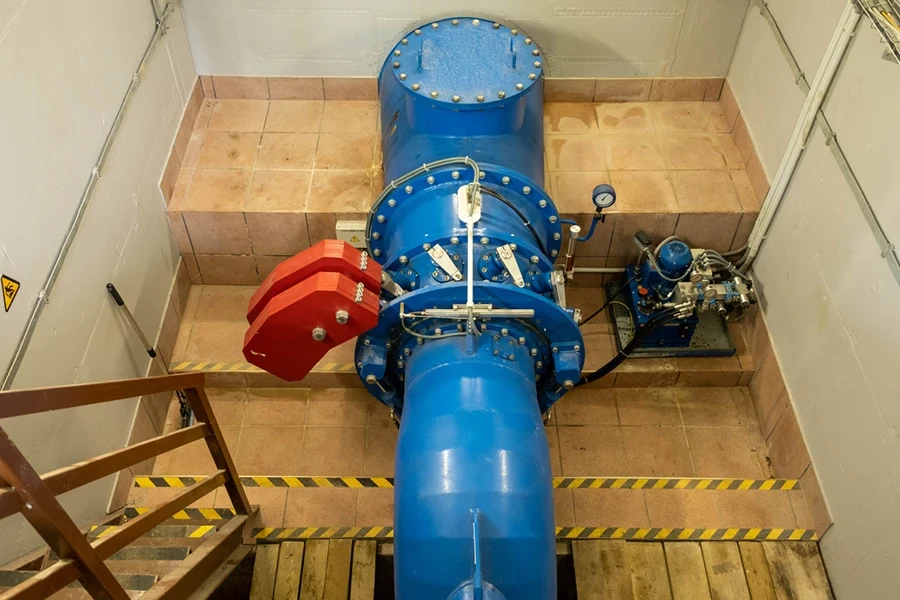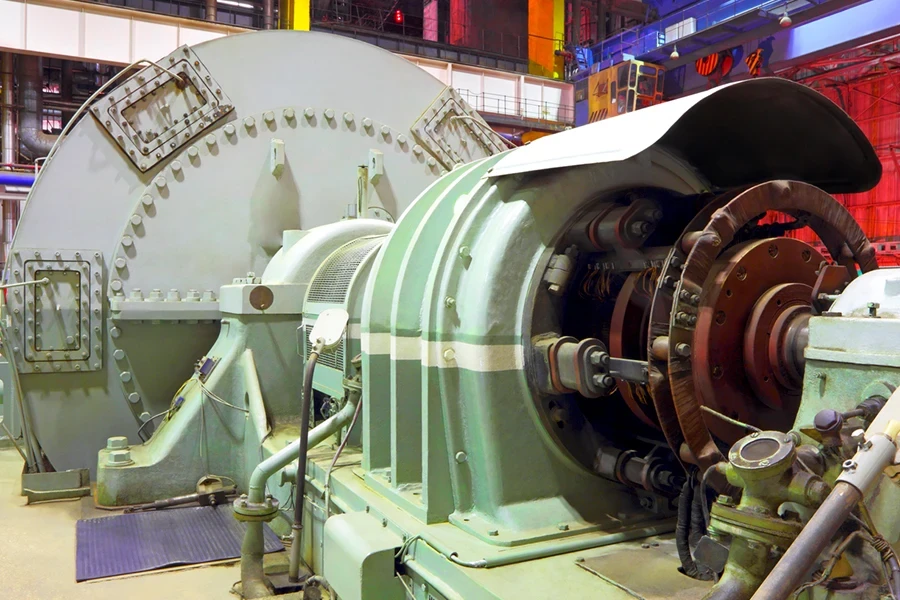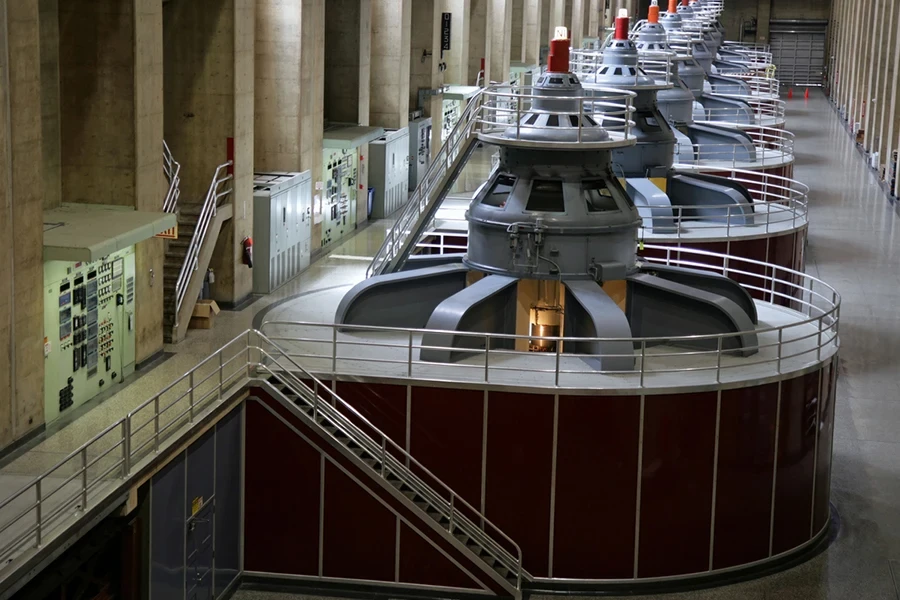The expandable bladder moves, reaching the point where it snaps back, creating a rotary motion for the water wheel. This system has long formed the backbone of renewable energy. Its technique, known as hydroelectric generation, has been in wide use for hundreds of years, and its time is far from over. In this article, you are going to learn about the technicalities of hydroelectric generators, the benefits they offer, their impact on the environment, and the smart tech advancements they are on the verge of. By the end of the article, you will have a complete guide to how hydroelectric generators work.
Table of Contents:
1. How hydroelectric generators work
2. Advantages of hydroelectric power
3. Environmental considerations
4. Technological advancements in hydroelectric generators
5. Future prospects of hydroelectric energy
How hydroelectric generators work

Hydroelectric generators work on a straightforward principle: they take the kinetic energy of the water, flowing from the dam through the turbines, and convert it into electrical energy. To do this, you need to collect plenty of water in a reservoir, usually behind a dam across a river. The dammed-up water is then released through a spillway comprised of turbines.
Each one is attached to a generator. When the turbines turn, the magnets inside the generators spin, which in turn causes electromagnetic induction and the production of electricity. This electricity is then transported through the power lines into homes and buildings, creating a steady flow of renewable energy.
The efficiency at which a hydroelectric generator creates electricity is influenced by factors such as the flow rate of the water, the height at which it falls (the head) and the type of turbine used. Improvements in design, as well as the use of advanced control systems, have increased the efficiency and output of hydroelectric plants. Hydropower now accounts for 17 per cent of the world’s entire energy production.
Advantages of hydroelectric power

Hydroelectric power has a lot of advantages and can be one of the best sources of renewable energy.
On the one hand, hydroelectric power is a renewable energy resource because it is completely dependant on the water cycle. That means it can be easily restocked by precipitation and evaporation, which makes it both dependable and stable in the long term.
On the other hand, hydroelectric power doesn’t produce any pollution. The process is very simple: water falling from a high position to a low one spins a turbine which is connected to a generator. The only disadvantage is that in order to produce electricity, we have to create reservoirs and dams, which can be very expensive.
However, overall, it can be claimed that hydroelectric power is one of the best sources of renewable energy for the future.
Second, hydroelectric generators are cheap to run and maintain. Once they are built, the cost of generating hydroelectricity is much lower than the use of fossil fuels. Also, many hydroelectric plants can work well for a long time, often more than 50 to 100 years with maintenance.
A third major benefit is that hydroelectric plants can deliver peak-load electricity – that is, they can adjust the rate of water flow according to demand, giving the power grid flexibility in matching supply with needs. This is especially helpful in areas with high energy demand or when wind and solar are sources of renewable electricity, as hydro can mitigate wind- and solar-generated power fluctuations.
Environmental considerations

Hydroelectric power production is largely clean, with little impact on the environment, except when a dam has to be built or a reservoir constructed, which has an obvious impact on local ecology – land flooded by the reservoir can destroy habitats, displace wildlife, alter water quality and change water temperature.
To blunt some of those impacts, most modern hydroelectric projects also include measures to preserve and restore ecosystems. Fish ladders and bypass systems can allow aquatic species to make their way around dams, while the release schedules of new hydropower facilities can mimic natural flows to aid downstream habitats.
Moreover, silt deposition in reservoirs reduces the capacity of hydroelectric plants, and can be harmful to aquatic organisms. Reservoir dredging and silt management are necessary to maintain reservoir capacity and ecological quality.
However, in spite of these obstacles, hydroelectric power is still one of the cleanest energy sources. First, it does not emit greenhouse gases directly or air pollutants. In terms of carbon footprint and the effort to minimise climate change, hydroelectric power does not cause harm.
Technological advancements in hydroelectric generators

Recent innovative technologies have made hydroelectric generators greener and cheaper than ever before. For example, improvements to turbine designs – including the creation of fish-friendly and low-head designs – have greatly reduced the adverse environmental effects and maximised the energy output of smaller streams and rivers.
Meanwhile, increased strength and new types of materials, combined with better manufacturing techniques, have extended the life and improved the performance of hydroelectric components. For example, the use of corrosion-resistant turbine materials and coatings has increased the length of time turbines operate between maintenance runs.
Additionally, some hydroelectric plants have been modernised by linking them to smart grids. This has enabled some operators to manage energy generation and grid balancing in real time, notably by automatically adjusting water flow and power output from dams, with the aim of maximising output efficiency for grid stability.
The other is into pump-storage hydroelectric systems, where excess electricity is used to pump water uphill into reservoirs during times of low demand, which is then released to generate electricity during peak demand, providing backup power and making grids more resilient.
Future prospects of hydroelectric energy

Indeed, the future looks promising for hydroelectric energy. Many new trends and developments will enable the industry to expand and innovate. In the foreseeable future, small-scale and micro-hydroelectric systems will become widely available. These systems often provide electricity in decentralised and community-based ways, and are particularly useful for supplying energy to remote areas while reducing the necessity of large power plants.
Also, hybrid hydroelectric systems combining hydro with other renewable technologies such as solar and wind are appearing. They are more consistent and reliable than hydro, capitalising on complementary production conditions.
New efforts to mitigate climate change and produce renewable energy on a global level will encourage more investment into hydroelectric projects. There are great possibilities for the expansion of hydroelectric infrastructure in developing countries and the facilitation of access to clean energy in emerging markets.
Hydroelectric generators will become more efficient and environmentally compatible as technological development continues. Moreover, the ongoing search for innovative materials, turbine designs and energy storage solutions will continue to ensure that hydroelectric power remains an integral part of sustainable energy policies everywhere.
Conclusion
Hydroelectric generators are the rock of the renewable energy era. Their fundamentals, advantages and disadvantages, environmental impacts, and technological evolution are important for a feasible and future vision of energy. Indeed, hydroelectric power will have a key role in the path to energy sustainability, through technological progress and closer attention to the environmental implications.



